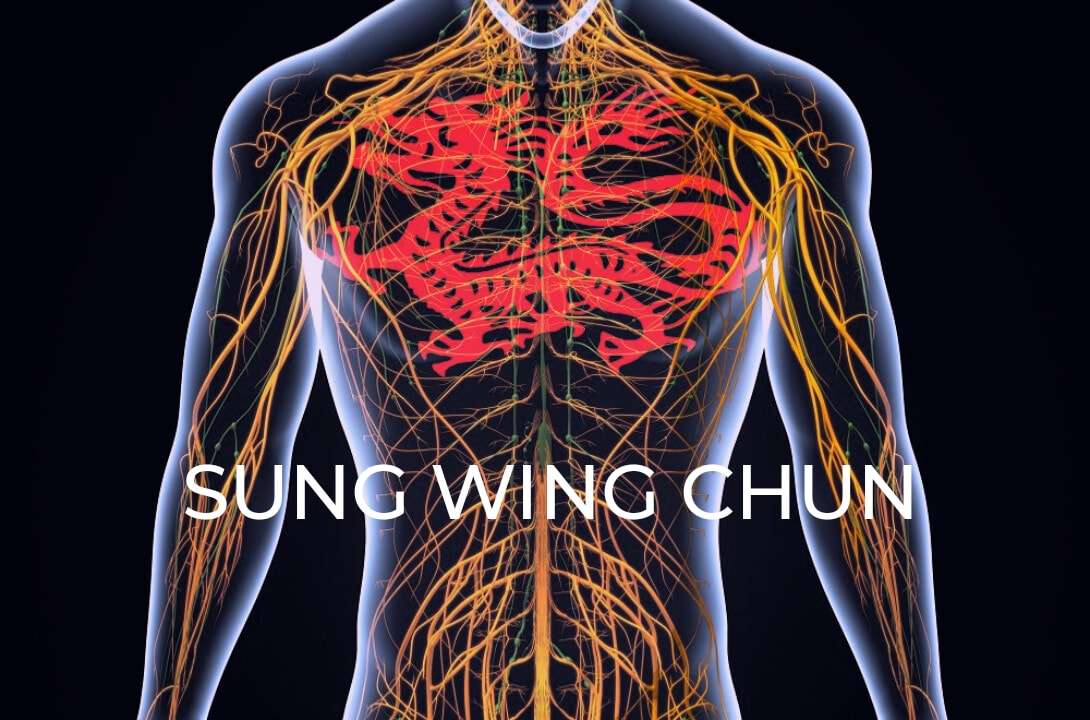October 11th, 2019
10/11/2019
Structural Wing Chun A problem with using the term internal wing chun is that you quickly allow yourself to be judged by the language and definitions used by others arts. Those arts may have a lot to teach, but it can be hard to de-clutter the dogma and superstition of methods dating back to before sound scientific objective thinking. What I see as being important is not your words, but how your wing chun is structured. Is it done is such a way that your structure is aligned to support a strong contact point (wrist, fist, leg etc), or is it a structure designed to use the whole body to deal with force. With the first the emphasis is pointing outwards with the other it is inwards. I cannot emphasis enough how different those ideas are and how much they will effect your wing chun. CST is about the latter and if you are not yet ready to understand that then you will get derailed on your journey.
I am sure that Ip Man taught all of his diligent students good quality structural wing chun as you have to do for all new students. He gave them all the building blocks to make wing chun their own as is the job of any teacher. People like Chu Shong Tin and Wong Shun Leung ran with that, they analysed, thought and tested what they learned and made for themselves usable but different systems. Other contemporaries really just did nothing with it, they saw those blocks and thought that was it all. Unfortunately they passed on that shell of a system to their students and what we are left with large pockets of wing chun around the world without any substance. A wing chun which only works on other wing chun students. No wonder people want to supplement their training with additional arts. This phenomenon is likely to exist in CST lineage as well. Sigung for the majority of his career passed on not just the structural wing chun he learned, but he tried to give the details of his refinements and understanding (people see this as internal alignment). But the truth is it is not just what the teacher has to give, it is the effort and tenacity of the student which will lead to the transition of ability through the generations. No one can quite have what CST had, it was his, the combination of billions of incidents, habits and ideas of a lifetime. Copying Picasso will not make you Picasso. What we are talking about here is art; you start with solid principles but art is alive and subject to reality and outside influences. Angles and weight distribution might give you the bare bones of information for learning a form, but to understand it do not just question angles and measurements but question WHY. What is the common denominator that makes the whole package work? Parroting CST words is not understanding. Words have the annoying habit of existing in context both in the situation and to who they were said at a point in time. CST wing chun is a precious thing, it does not fit with standardised syllabuses and strict rules because it involves how our concious and subconcious minds interact with our bodies to deal with outside forces. If you start telling me you know all the secrets, that you have nim tao, I will tell you I already know enough about you. Imagination might help, as might meditation, yoga etc but they are different paths and if you follow a different path you will reach a different destination. That is fine, don't confuse yourself and others by saying it is the same place though. So to move your wing chun on from a structural skeleton to a living organism, you need to make it your own. There are loads of other arts we can look at to help us understand and to think. Looking outside the box can help your understand what is in the box. But there is no substitute for doing the work yourself. If you want to do what CST did try doing what CST did. You need a solid idea of what the art is and how it might work, or it will fail. Failure is good, it is part of the journey. Saying the words relax and nim tao a million times will not change you, understanding what they mean and how they are usable ideas might. There is no good teacher of this who is also not an obsessive student. Humility comes from knowing how little you know but confidence comes from the understanding of what you have learned and it's current limitations. That gives you the ability to grow beyond externally aligned structure.
0 Comments
Your comment will be posted after it is approved.
Leave a Reply. |
AuthorKeeping you up to date with what is happening in class Archives
July 2024
Categories |


 RSS Feed
RSS Feed